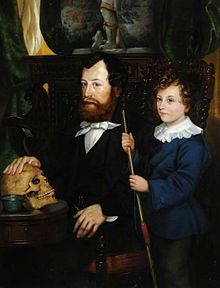
Bakewell is a market town and civil parish in the Derbyshire Dales district of Derbyshire, England, known for Bakewell pudding. It lies on the River Wye, 15 miles (23 km) south-west of Sheffield. It is the largest settlement and only town within the boundaries of the Peak District National Park. At the 2011 census, the population of the civil parish was 3,949. It was estimated at 3,695 in 2019. The town is close to the tourist attractions of Chatsworth House and Haddon Hall.

John Robert Mortimer was an English corn-merchant and archaeologist who lived in Driffield, East Riding of Yorkshire.

William Cunnington FSA was an English antiquarian and archaeologist.
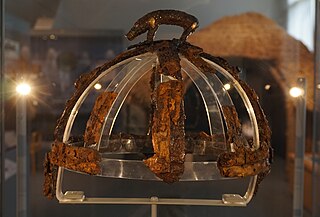
The Benty Grange helmet is an Anglo-Saxon boar-crested helmet from the seventh century AD. It was excavated by Thomas Bateman in 1848 from a tumulus at the Benty Grange farm in Monyash in western Derbyshire. The grave had probably been looted by the time of Bateman's excavation, but still contained other high-status objects suggestive of a richly furnished burial, such as the fragmentary remains of a hanging bowl. The helmet is displayed at Sheffield's Weston Park Museum, which purchased it from Bateman's estate in 1893.

Carl Wark is a rocky promontory on Hathersage Moor in the Peak District National Park, just inside the boundary of Sheffield, England. The promontory is faced by vertical cliffs on all but one side, which is protected by a prehistoric embankment. The cliffs and embankment form an enclosure that has been interpreted as an Iron Age hill fort, though the date of construction and purpose of the fortifications remains unknown. The site is a scheduled monument.
Below are notable events in archaeology that occurred in 1855.

Doll Tor is a stone circle just west of Stanton Moor, near the village of Birchover, Derbyshire in the English East Midlands. Doll Tor is part of a tradition of stone circle construction that spread throughout much of Britain, Ireland, and Brittany during the Late Neolithic and Early Bronze Ages, over a period between 3300 and 900 BCE. The purpose of such monuments is unknown, although archaeologists speculate that the stones represented supernatural entities for the circles' builders.
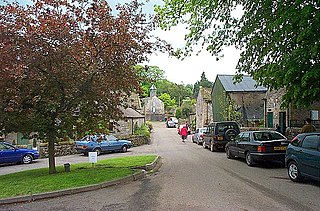
Middleton, often known as Middleton-by-Youlgreave or Middleton-by-Youlgrave to distinguish it from nearby Middleton-by-Wirksworth, is a village in the Peak District, Derbyshire, England. The appropriate civil parish is called Middleton and Smerrill. The population of this parish was 137 at the 2011 Census. It lies south west of Youlgreave, above the River Bradford. Its main industries are farming and tourism.
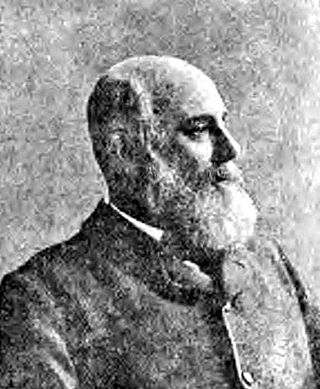
Sir (Thomas) William Evans, 1st Baronet was an English Liberal politician who represented the constituency of South Derbyshire.
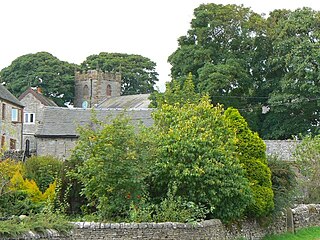
Wetton is a village in the Peak District National Park, North Staffordshire, at the top of the east side of the Manifold Valley. The population recorded in the 2001 Census was 157. At the time of the 2011 Census the population was recorded under Ilam. This article describes the location, some of the main features of the village, and a number of places of historical or general interest in or near the village. These include Long Low, Wetton, a prehistoric burial site unique to England.

The Pioneer Helmet, is an Anglo-Saxon boar-crested helmet from the late seventh century found in Wollaston, Northamptonshire, United Kingdom. It was discovered during a March 1997 excavation before the land was to be mined for gravel and was part of the grave of a young man. Other objects in the grave, such as a hanging bowl and a pattern welded sword, suggest that it was the burial mound of a high-status warrior.
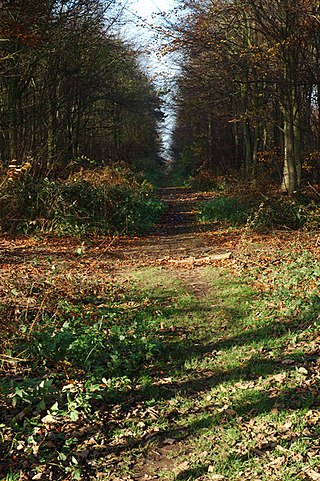
Heath Wood barrow cemetery is a Viking burial site near Ingleby, Derbyshire.

Nine Stones Close, also known as the Grey Ladies, is a stone circle on Harthill Moor in Derbyshire in the English East Midlands. It is part of a tradition of stone circle construction that spread throughout much of Britain, Ireland and Brittany during the Late Neolithic and Early Bronze Ages, over a period between 3300 and 900 BCE. The purpose of the monument is unknown.
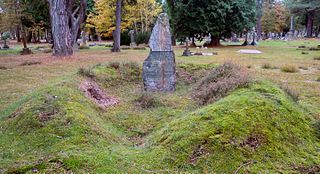
Charles Warne was an English antiquarian and archaeologist who specialized in the prehistoric and ancient monuments of Dorset.

Benty Grange is a Site of Special Scientific Interest in the parish of Monyash in Derbyshire, England. 21.1 ha in size and with at least four grass species and ten other plant species, it is considered of national importance as one of the largest areas of unimproved species-rich neutral lowland grassland in the Peak District National Park. The area was confirmed as a Site of Special Scientific Interest on 8 March 2013, following notification of the designation on 19 June 2012.

The Benty Grange hanging bowl is a fragmentary Anglo-Saxon artifact from the seventh century AD. All that remains are parts of two escutcheons: bronze frames that are usually circular and elaborately decorated, and that sit along the outside of the rim or at the interior base of a hanging bowl. A third one disintegrated soon after excavation, and it no longer survives. The escutcheons were found in 1848 by the antiquary Thomas Bateman, while excavating a tumulus at the Benty Grange farm in western Derbyshire. They were presumably buried as part of an entire hanging bowl. The grave had probably been looted by the time of Bateman's excavation, but still contained high-status objects suggestive of a richly furnished burial, including the hanging bowl and the boar-crested Benty Grange helmet.
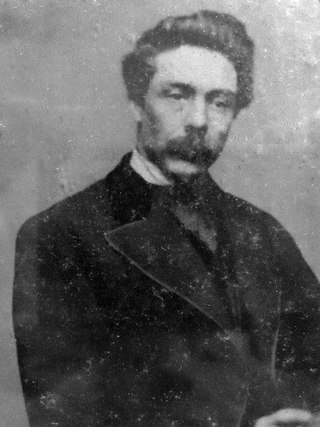
Micah Salt was a tailor and amateur archaeologist from Buxton in Derbyshire.

Harthill is a civil parish within the Derbyshire Dales district, in the county of Derbyshire, England. Largely rural, along with parts of the neighbouring Youlgreave parish, in the 2021 census Harthill had a population of 48. It is 128 miles (206 km) north west of London, 18+1⁄2 miles (29.8 km) north west of the county city of Derby, and 3 miles (4.8 km) south east of the nearest market town of Bakewell. Harthill is wholly within the Peak District national park, and touches the parishes of Birchover, Elton, Gratton, Nether Haddon, Stanton and Youlgreave. There are eight listed buildings in Harthill.
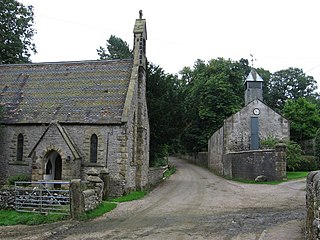
Middleton and Smerrill is a civil parish within the Derbyshire Dales district, in the county of Derbyshire, England. Largely rural except for the village of Middleton-by-Youlgreave and isolated farms, Middleton and Smerrill's population is 137 residents in 2011. It is 130 miles (210 km) north west of London, 20 miles (32 km) north west of the county city of Derby, and 4+1⁄2 miles (7.2 km) south west of the nearest market town of Bakewell. Middleton and Smerrill is wholly within the Peak District national park, in the southern part of the area. It is one of the largest parishes but among the smallest by way of residents, and shares a border with the parishes of Gratton, Hartington Middle Quarter, Hartington Nether Quarter, Hartington Town Quarter, Monyash and Youlgreave. There are 31 listed structures in Middleton and Smerrill.

Germanic boar helmets or boar crested helmets are attested in archaeological finds from England, Denmark and Sweden, dating to Vendel and Anglo-Saxon periods, and Old English and Old Norse written sources. They consist of helmets decorated with either a boar crest or other boar imagery that was believed to offer protection in battle to the wearer. They have also been proposed to be a costume for the ritual transformation into a boar, similar to berserkers, and to be associated with Freyr.
